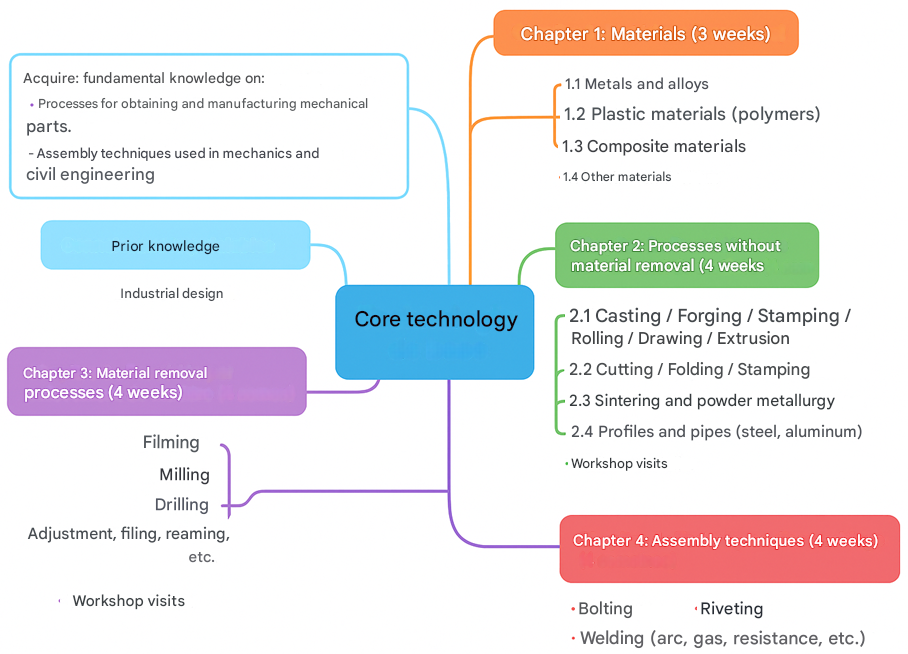
This course will provide students with knowledge of the processes for obtaining and manufacturing parts and their assembly techniques.
Objectifs de l'enseignement:
Cet enseignement permettra aux étudiants d’acquérir des connaissances sur les procédés d'obtention et fabrication de pièces et des techniques de leurs assemblages.
أهداف المقياس:
تُزود هذه الدورة الطلاب بمعرفة عمليات الحصول على الأجزاء وتصنيعها وتقنيات تجميعها.


- المعلم: abderrahmane khechekhouche

This course is designed to provide a general introduction to skills and strategies to understand texts in spoken and written English with a focus on the field of Engineering. It is expected that this course helps students of this major to learn and understand what they are to write and read. Therefore, a variety of skills and methods is designed to offer students an opportunity to strengthen what they already know and to receive new knowledge of technical English in their area of research and prospective authoring tasks including scientific papers, proposals, technical reports, etc. Topics such as a comprehensive review of grammar and structures in English, reading comprehension skills together with a style of learning new technical words through word visualization techniques in related and quite novel technical readings are expected to cover.
- المعلم: zeghdi zoubir

- المعلم: zine ali

ميكانيك عقلاني للسنة الثانية هندسة ميكانيكية
يحتوي على:
مراجعة في الاشعة
علم السكون
الجسم الجاسئ الصلب
GÉOMÉTRIE DES MASSES
علم الحركة

L'objectif de cette matière est d'introduire l’étudiant dans le domaine de la mécanique des fluides, la première partie est consacrée aux propriétés des fluides, la seconde est réservée à la statique des fluides, la troisième concerne l’étude des fluides non visqueux en mouvement et dans la dernière partie, l'étudiant doit etre capable d'étudier le mouvement d'un fluide réel.
Apprendre à l'étudiant les critères de précision de fabrication et assemblage des pièces;
Connaître et savoir choisir, dans différents cas, les méthodes et moyens de contrôle et de
mesures des dimensions et des défauts de fabrication des pièces mécaniques.
- المعلم: necib djilani
